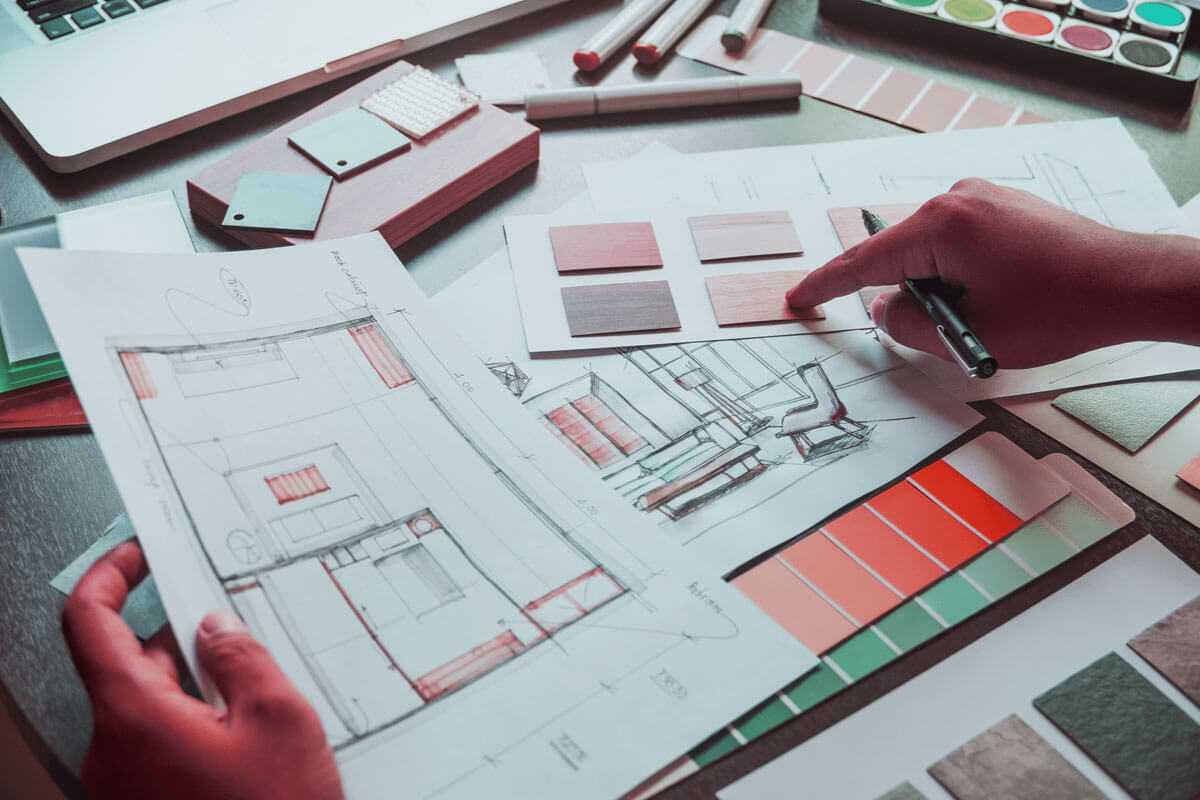A step-by-step home renovation checklist helps you plan, budget, and complete your project without costly mistakes or delays. Start with goal-setting and budgeting, secure permits, hire professionals, follow the correct work sequence, and finish with quality checks. This systematic approach saves money and reduces stress.
- Setting Your Renovation Goals and Budget
- Permit Applications and Building Code Requirements
- Contractor Selection and Material Choices
- Sequential Renovation Timeline
- Phase 1: Structural and Infrastructure Work
- Phase 2: Closing Walls and Major Installations
- Phase 3: Interior Finishing and Final Details
- Managing Costs and Avoiding Common Mistakes
- Sustainable Materials and Energy Efficiency Focus
- Post-Renovation Review and Maintenance
Home renovations can transform your space, but they need careful planning. Spending on home renovations is expected to reach $509 billion in 2025 , with homeowners expected to continue big spending despite stubbornly high costs . More than 78% of homeowners exceed their renovation budget, often by $5,000 or more . This comprehensive checklist provides the structure you need to avoid common pitfalls and complete your renovation successfully.
Whether you’re updating a single room or tackling a whole-house remodel, following the right steps in order prevents delays, keeps costs manageable, and ensures quality results. This renovation planning guide will walk you through each phase of the home renovation project to help you create the home you want.
Setting Your Renovation Goals and Budget
Define what you want to achieve before making any changes. Your goals should balance style, function, and budget constraints for a truly organized renovation.
Start by listing your must-haves versus nice-to-haves. Ask yourself what problems you’re solving and how the space should work better for your family. 91% of renovators in 2022 enlisted professional help , showing that clear communication of goals is essential. Write down specific objectives like “create more storage in the kitchen” or “improve energy efficiency.”
Next, set a realistic budget that includes a 20-30% buffer for unexpected costs. Home renovation costs range from $17,697 to $79,125 depending on project complexity , with materials taking up 40% of costs and labor another 25-35%. Major kitchen remodels take at least 8 weeks, bathrooms 6-8 weeks, and whole-house renovations 4-6 months . Research typical costs for your project type and get quotes from contractors early.
Almost two-thirds of U.S. homeowners are budgeting at least $20,000 for home improvements in 2025 . Consider financing options carefully, with home equity being a popular choice as homeowners have gained about $150,000 in home equity over the last five years .
Permit Applications and Building Code Requirements
Check local regulations before starting any work that changes structure, plumbing, or electrical systems. Skip this step and you risk fines, delays, or safety issues that could turn your sequential plan into chaos.
Contact your local building department to understand what permits you need. Permit costs for small projects like kitchen remodels range from $50 to $300, and can go up to $1,800 for bigger remodels . Typical projects requiring permits include structural changes, electrical work, plumbing modifications, HVAC updates, and additions. Some cosmetic work like painting or flooring may not need permits, but it’s better to ask.
Technical assessments come next. For major renovations, hire professionals to inspect your home’s structure, electrical system, plumbing, and HVAC before work begins. A home inspection adds an extra $300 to $500 to your home renovation cost but reveals hidden problems that could derail your remodeling timeline and budget.
Plan for inspection visits during your project. Building inspectors typically check work at specific stages like after framing, rough electrical/plumbing, and before final approval. Schedule these inspections in advance to avoid work stoppages.
Contractor Selection and Material Choices
Select sustainable building materials and skilled contractors before work begins. Quality choices here affect both your budget and long-term satisfaction in your house remodeling.
Finding the Right Team
Start with contractor research at least 2-3 months before your start date. Sweeten brings homeowners an exceptional renovation experience by personally matching trusted general contractors to your project . Get recommendations from friends, check online reviews, and verify licenses and insurance. Interview at least three contractors and request detailed quotes that break down materials, labor, and timeline.
Red flags include door-to-door solicitation, requests for full payment upfront, or quotes significantly lower than others. Good contractors provide references, communicate clearly, and offer detailed contracts with change order procedures. This careful vetting prevents the unplanned renovation disasters that plague many projects.
Selecting Durable Materials
2025 trends favor sustainable materials like recycled composites, reclaimed wood, and products designed for reuse . These choices often cost more upfront but offer better material durability and environmental benefits. For example, bamboo flooring grows faster than traditional hardwood while offering similar aesthetics and longevity.
Energy efficiency upgrades deserve special attention. Smart homeowners upgrade to triple-pane windows, Low-E coatings, and better insulation to reduce utility bills and improve comfort . Energy-efficient appliances can reduce household energy use by up to 30% .
Compare maintenance requirements when choosing finishes. Natural stone countertops look beautiful but need regular sealing, while quartz requires less upkeep. Consider how each choice fits your lifestyle and budget over time.
Sequential Renovation Timeline
Follow the correct work sequence to avoid delays and rework. Each phase builds on the previous one, so rushing or skipping steps creates problems later in your home improvement guide.
Phase 1: Structural and Infrastructure Work
Begin with demolition and structural modifications. Your trade contractors should have the manpower and the correct tools when carrying out demolition work, such as removing old cabinetry, tearing down walls, or opening up new windows or doorways . This messy phase includes removing walls, upgrading electrical/plumbing rough-ins, and HVAC work.
Structural work happens first because it affects everything else. If you’re removing a wall, that must happen before new flooring or paint. Electrical and plumbing rough-ins come next, running new wires and pipes through walls before they’re closed up.
Phase 2: Closing Walls and Major Installations
Install insulation, hang drywall, and complete major installations like windows and exterior doors. Advanced insulation materials like bio-based spray foam can reduce energy costs by up to 40% . This phase also includes flooring installation in most rooms.
Project management becomes crucial here as different trades coordinate their work. You’ll want to clearly communicate with your contractor during this step as the placing and structure of these items are crucial to how your home will look in the end .
Phase 3: Interior Finishing and Final Details
Complete painting, install fixtures, and add final touches like cabinet hardware and trim. Minor projects are next: adding in the new tile, installing the appliances, painting the walls, and making the aesthetic updates you’ve chosen . This phase transforms your space from a construction zone into your finished home.
Quality matters most in finishing work since these details are what you see and use daily. Take time to review each element and address any issues before final payment.
Managing Costs and Avoiding Common Mistakes
Control expenses by planning for surprises and monitoring progress carefully. Smart budget planning prevents financial stress and project delays, unlike spontaneous remodeling that often leads to cost overruns.
About 85% of homeowners face unplanned repairs during renovations, with 42% spending $5,000 or more on surprise issues . Common unexpected costs include structural problems discovered during demolition, outdated electrical systems that need replacement, and plumbing issues behind walls. Construction costs rose 5.4% nationally compared to a year ago, with regional variations ranging from 3.3% to 6.7% .
Create a detailed budget spreadsheet tracking planned versus actual costs for each category. Review this weekly with your contractor and discuss any changes before they happen. Cost escalations often result from poor communication about upgrades or change orders.
Consider doing some work yourself to save money, but be realistic about your skills. About 71% of homeowners choose DIY projects due to inflation concerns, with 76% of homeowners aged 18-24 doing projects themselves . Simple tasks like painting or landscaping work well for DIY, while electrical and plumbing should stay with professionals.
Monitor material deliveries and quality. Material costs are predicted to increase by 5-7% in 2025, slightly above anticipated inflation rates . Supply chain issues can still cause delays, so order materials early and inspect them when they arrive.
Sustainable Materials and Energy Efficiency Focus
Make choices that benefit both your wallet and the environment. Energy efficiency improvements often qualify for tax credits and reduce utility bills for years, making them essential elements of any kitchen renovation checklist or bathroom remodel timeline.
LED lights use up to 90% less energy than regular bulbs and save about $225 annually for the average homeowner . Other high-impact upgrades include Energy Star appliances, low-flow fixtures, and smart thermostats that optimize heating and cooling.
Solar solutions are becoming more attractive with photovoltaic shingles and clear solar films that blend into home architecture . Heat pump technology has also improved dramatically, offering precise climate control with minimal electricity use.
Sustainable design extends beyond energy to include water conservation, indoor air quality, and material choices. Low-flow fixtures can reduce water usage by 20-30% while maintaining performance. Choose low-VOC paints and finishes to improve indoor air quality, especially important if family members have allergies or sensitivities.
Consider the full lifecycle cost of materials and systems. More expensive choices often provide better value through lower maintenance, longer life, and better performance.
Post-Renovation Review and Maintenance
Complete quality checks and establish post-renovation maintenance routines to protect your investment. This final step ensures your structured remodeling delivers long-term value rather than becoming an exhaustive remodeling protocol that never truly ends.
Walk through your completed project with your contractor before final payment. Million Dollar Contractor Stephen Fanuka suggests placing a notepad in each renovated space during final walk-throughs to track any remaining issues. Create a punch list of any remaining problems and set deadlines for completion.
Document your renovation with photos, receipts, and warranty information. This creates a valuable record for insurance, taxes, and future maintenance. Many improvements qualify for tax credits, so keep detailed records of energy efficiency upgrades and sustainable materials.
Establish maintenance schedules for new systems and materials. Your contractor should provide care instructions for specific materials like natural stone countertops or hardwood floors. Schedule professional maintenance for complex systems like HVAC or solar panels.
Plan for warranty coverage on major items. Quality contractors typically offer warranties on their work, while manufacturers warranty materials and appliances. Keep track of warranty periods and schedule any needed service before coverage expires.
Create a timeline management system that includes seasonal tasks like gutter cleaning, HVAC filter changes, and exterior inspections. Regular upkeep prevents small issues from becoming expensive problems and keeps your renovation looking fresh.
Your completed renovation should improve your home’s comfort, efficiency, and value while reflecting your personal style. By following this step-by-step home renovation checklist, you’ve created a systematic approach that minimizes stress, controls costs, and delivers quality results that last for years. This home improvement roadmap serves as your foolproof renovation system, where each step-by-step progression builds toward your dream home.
Remember that successful renovations combine careful planning with flexibility to handle unexpected issues. The time invested in proper preparation pays dividends through smoother execution and better outcomes. Whether this is your first renovation or you’re a seasoned homeowner, having a clear renovation guide helps ensure your project succeeds, proving that this checklist serves as both a task list and verification guide throughout your journey.





